The Younger Brothers

Brief Synopsis
Cast & Crew
Edwin L. Marin
Wayne Morris
Janis Paige
Bruce Bennett
Geraldine Brooks
Robert Hutton
Film Details
Technical Specs

Synopsis
Just after the Civil War, convicted bank robbers the Younger Brothers, Cole, Jim and Bob, arrive in the Minnesota town of Cedar Creek to fulfill the terms of their parole. If they do not get into trouble during this period, they can obtain pardons for their crimes and return to farming in Missouri. Already in town are Mary Hathaway, Jim's girl, the youngest brother Johnny and detective Ryckman, who has come to persecute the brothers to avenge the loss of his job with the Pinkerton agency, which he blames on them. Ryckman's wife Belle, tired of his obsession, returns to St. Paul. Denied access to the town by angry townspeople who have been stirred up by Ryckman, the Youngers camp in the nearby woods. There, Kate Shepherd, the leader of an outlaw gang, invites them to join her, but they are determined to go straight. That night, Jim sneaks into town to see Mary, and is followed by Cole and Bob. Johnny goes off on his own to the saloon, and there, Ryckman goads him into a fight and he kills a man in self-defense. Despite pressure from Ryckman, Sheriff Knudson refuses to be rushed into assuming that the Youngers are guilty. Learning what happened, the Youngers leave Johnny behind and ride to the state line to face the posse waiting there. They convince Knudson that they had nothing to do with the killing and everyone turns back toward town. Kate, however, sends one of her men to wait for Johnny to cross the state line bridge and bring him to her. Ryckman then gives Mary a message for Jim stating that Johnny has joined Kate. When Cole investigates, Kate captures him as well. Kate plans to use Cole and Johnny as the fall guys for a robbery that she has organized. Jim and Bob go after their brothers, and are directed to the town of River Rock by a message that Ryckman writes in the dust in Kate's house. In River Rock, Jim and Bob abscond with some guns, but leave behind money to pay for them. Kate then gives Cole an unloaded gun and orders him to go along with the robbery. From their hiding place, Jim and Bob are puzzled when they see Cole wearing a gun, but follow the group. At the bank, the Youngers do their best to stop the robbery, which claims Kate's life, and later take the money from the bandits and return it to the bank. On the way back to Cedar Creek, the brothers encounter a posse formed by Ryckman. The Youngers evade the posse, but Cole is wounded in the process. Cole tells no one of his injury, and the brothers hurry to their parole hearing in St. Paul. The pardon is granted despite protests from Ryckman, but he is still determined to punish the brothers. Along with some other men, he surrounds their campsite, intending to hang them. Johnny, however, forces him to halt the hanging. The brothers then return to Missouri as free men.

Director
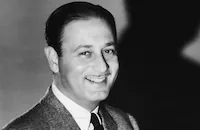
Edwin L. Marin
Cast

Wayne Morris
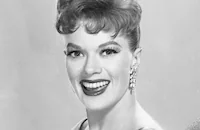
Janis Paige

Bruce Bennett
Geraldine Brooks

Robert Hutton

Alan Hale
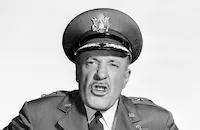
Fred Clark
James Brown
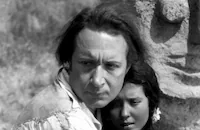
Monte Blue
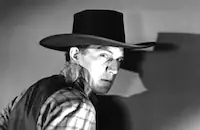
Tom Tyler
William Forrest

Ian Wolfe
Gene Stutenroth
Lee Morgan
Sid Saylor
Joan Blair
Philo Mccullough
Emmett Lynn
Jack Watt
J. G. Macmahon

Paul Panzer
Charles Sherlock
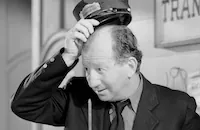
Hank Mann
George Sherwood
Dick Gordon
Creighton Hale
Ben Corbett
Artie Ortego
Dick Hudkins
Bob Burrows
Richard Brehm
Kansas Moehring
Kermit Maynard
Crew
Edna Anhalt
G. W. Berntsen
Robert Brower
Robert Burks
Gregory Cava
Charles H. Clarke
Saul Elkins
Morton Grant
Stanley Jones
Natalie Kalmus
William Kissel
Charles Maxwell
Frederick Richards
William Snyder
Perc Westmore

Film Details
Technical Specs

Articles
The Younger Brothers
Cases have been made for Cole, Jim, John, and Bob Younger, four of 13 children from a poor family, as victims of persecution who turned to crime for both revenge and survival; as pro-Confederate Missourians, they did find themselves with few rights under an oppressive and divisive state constitution adopted after the Civil War. Whatever their reasons, it is fairly certain that the real-life Youngers were quite ruthless once they adopted the outlaw life. They were responsible for many murders, not only of law enforcement officers, bank and railroad employees, but of a number of innocent bystanders. The older boys were once part of Quantrill's Raiders, a Confederate guerilla troop whose most infamous act was the looting and burning of Lawrence, Kansas, resulting in the slaughter of 200 people.
All four Youngers later joined up with the James Gang and were finally captured in an 1876 attempt to rob a bank in Northfield, Minnesota. Although the James Gang circled back to Missouri, Cole, Jim and Bob were badly wounded and sent to prison (John had been killed two years earlier). Bob died there in 1889. Cole and Jim were paroled in 1901, and Jim committed suicide a year later. Cole, however, converted to Christianity and repented of his past, formed a Wild West show with Frank James, wrote an autobiography (in which he claimed to have been a fighter of injustice and admitted to only one crime, the Northfield robbery), and died peacefully in his sleep at the age of 72.
In The Younger Brothers, the siblings are all alive and well and played by Wayne Morris (Cole), Bruce Bennett (Jim), Robert Hutton (John) and James Brown (Bob). Morris has often been called the last of the B Western stars, and he certainly made a string of them between the early 40s and his death at 45 in 1959. He also made guest appearances on a number of Western TV series. One of his earliest forays into the genre was Bad Men of Missouri (1941), in which he played Bob Younger to Dennis Morgan's Cole and Arthur Kennedy's Jim. An Olympic silver medalist and early movie Tarzan, Bruce Bennett plays Jim Younger in this film, and played Cole a short time later in The Great Missouri Raid (1951).
The Youngers have been featured in countless films, from the earliest days of the silents (when Cole was still alive) up to recent times (with Scott Caan playing young Cole in American Outlaws, 2001). Two of the most acclaimed depictions of the gang have been Philip Kaufman's The Great Northfield Minnesota Raid (1972), with Cliff Robertson as Cole and Robert Duvall as Jesse James, and Walter Hill's The Long Riders (1980) with David, Keith, and Robert Carradine as the Youngers. The latter version is also considered to be the most historically accurate.
Wayne Morris may well have been the last of the B Western stars, but Warner Brothers gave The Younger Brothers the luxury of being shot in Technicolor by three-time Oscar®-nominated cinematographer William E. Snyder.
Director: Edward L. Marin
Producer: Saul Elkins
Screenplay: Edna Anhalt, based on a story by Morton Grant
Cinematography: William Snyder
Editing: Frederick Richards
Art Direction: Charles H. Clarke
Original Music: William Lava
Cast: Wayne Morris (Cole Younger), Bruce Bennett (Jim Younger), Janis Paige (Kate Shepherd), Geraldine Brooks (Mary Hathaway), Robert Hutton (Johnny Younger), Alan Hale (Sheriff Knudson).
C-76m.
by Rob Nixon

The Younger Brothers
Quotes
Trivia
Notes
The film begins with the following written foreword: "Out of the turbulent aftermath of the Civil War came the fabulous "bad men"-Jesse James, the Daltons and the Younger Brothers. Although most of them served time in prison, the territory from Missouri to Minnesota still feared and hated the Younger Brothers...but not those who really knew them." The four Younger brothers, Cole, John, James and Robert, were reared in Missouri during the pre-Civil War years. When the war ended, the brothers became outlaws. In 1866, Cole joined Jesse James's gang, followed by Jim in 1856 and John and Bob in 1872. Cole had a child with Belle Starr in 1867. In 1874, John was killed by Pinkerton detectives. The other three brothers were captured and sentenced to life imprisonment after an aborted bank robbery in Northfield, MN. Bob died in jail of tuberculosis, and Cole and Jim were paroled in 1901. Jim later committed suicide, but Cole organized a Wild West show with Frank James and, in 1903, published his autobiography. Douglas Kennedy was announced in Los Angeles Times as a cast member.















